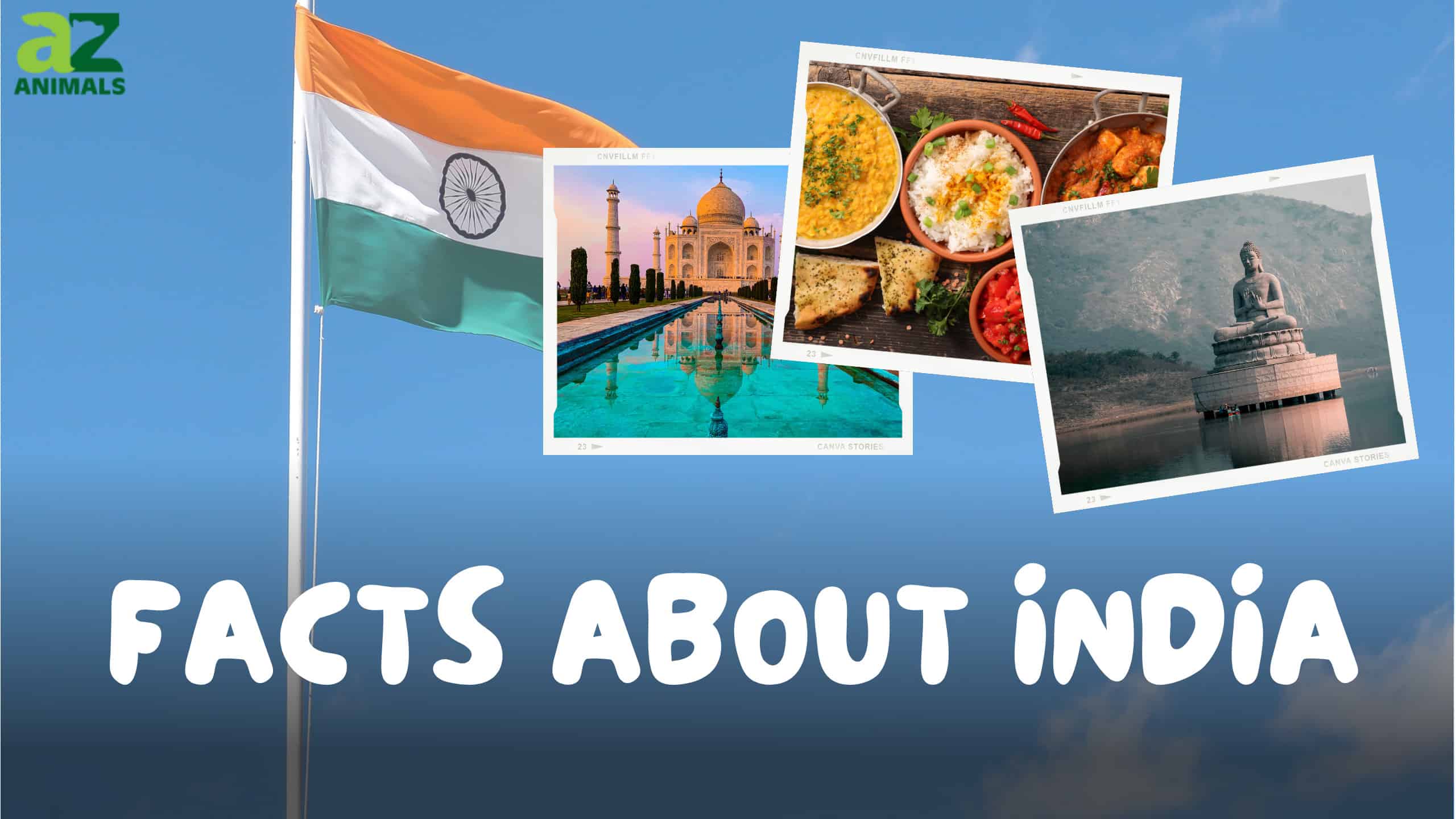India is a land of vibrant cultures and rich traditions, from bustling markets to intricate architecture. Learn about a history that spans millennia, a diverse landscape with even more diverse wildlife, and rich cultures full of tradition and art. Home to a tapestry of languages, religions, and cuisines, India is a mosaic of diversity.
Summarizing the vastness of India in 30 facts is a challenge, but our goal is to give you a glimpse into this incredible country through a few fascinating insights.
Geography
Making up 2.4 percent of the world’s land, India has some of the most unique geography in the world. From humid, tropical regions in the South to alpine forests in the North, the country’s diverse landscapes offer a striking contrast that reflects its rich natural beauty.
1. India is the 7th largest country in the world.
Spanning a whopping 1,269,210 square miles, India holds the title as the seventh-largest country globally and the second-largest in Asia.
2. The country is home to the highest mountain range in the world: The Himalayas.
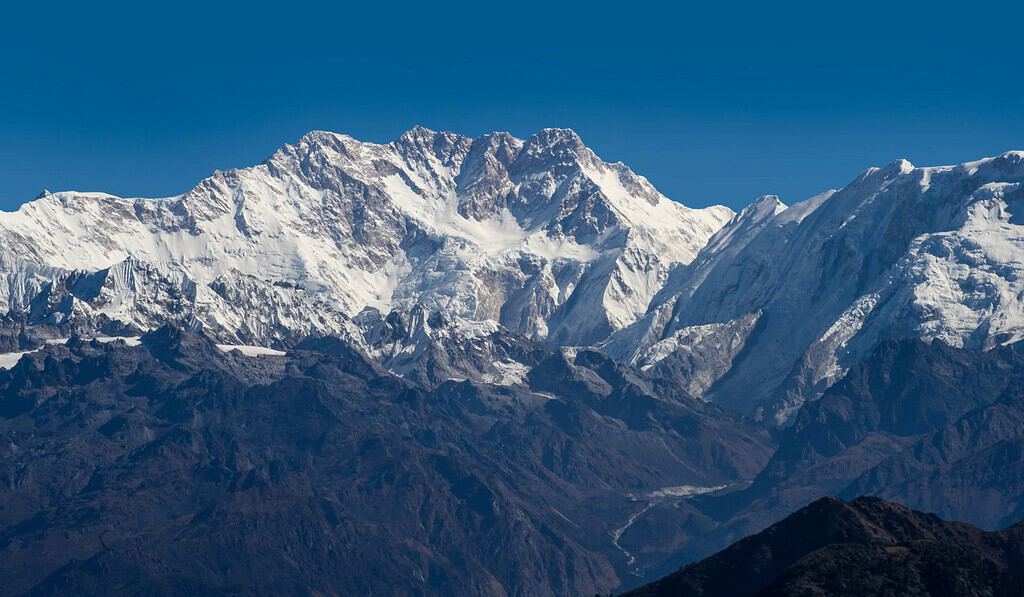
Kangchenjunga is the tallest mountain in India.
©Sundar Photo/Shutterstock.com
Framing the northeast border of India, the Himalayas feature some of the Earth’s highest peaks. The Himalayas span five countries: Nepal, China, Bhutan, Pakistan, and India.
3. The wettest place on Earth is in India.
Meghalaya gets 467 inches of rain annually, roughly the height of a four-story building. Due to the rapid decay of wood in this environment, the people of Meghalaya have created incredible living bridges. For centuries, they’ve artfully trained the roots and branches of trees to craft these unique and resilient structures.
4. India has 28 states and 8 union territories.

This diversity showcases the blend that defines India, a nation united in its rich variety of traditions.
©dikobraziy/ via Getty Images
The Indian states are vastly different from one another, each with its own cultures, customs, foods, and even languages.
5. India is its own subcontinent.
Resting on the Indian Plate, the Indian subcontinent is a peninsula situated between the Arabian Sea and the Bay of Bengal. Gradually shifting northward into the Eurasian Plate, this movement has given rise to the majestic Himalayas.
Cultures
From vibrant festivals to architectural marvels, India stands as a pinnacle of culture. The sheer diversity of practices and rituals across the country reflects the depth and vibrancy of this cultural mosaic.
6. India has 22 official languages
The most commonly spoken language is Hindi, which is also the oldest surviving language in the world. Additionally, each state has the freedom to choose its official languages from the pool of 22 languages.
7. There are 121 languages spoken in India.
And those are just the ones with at least 10,000 speakers. That’s a lot of languages! However, 97% of the country speaks one of the 22 official languages.
8. It’s the second-largest English-speaking country in the world.
With 265 million English speakers, India trails the US by only 41 million people, a gap set to narrow significantly. The English-speaking population in India is projected to quadruple in the next decade.
9. India is home to the largest number of vegetarians in the world.
India has one of the world’s lowest meat consumption rates, 38% of its population proudly identifies as vegetarian. At the heart of this dietary choice is Hinduism, the country’s predominant religion, advocating a message of non-violence towards all living beings.
10. India is the largest spice producer globally.
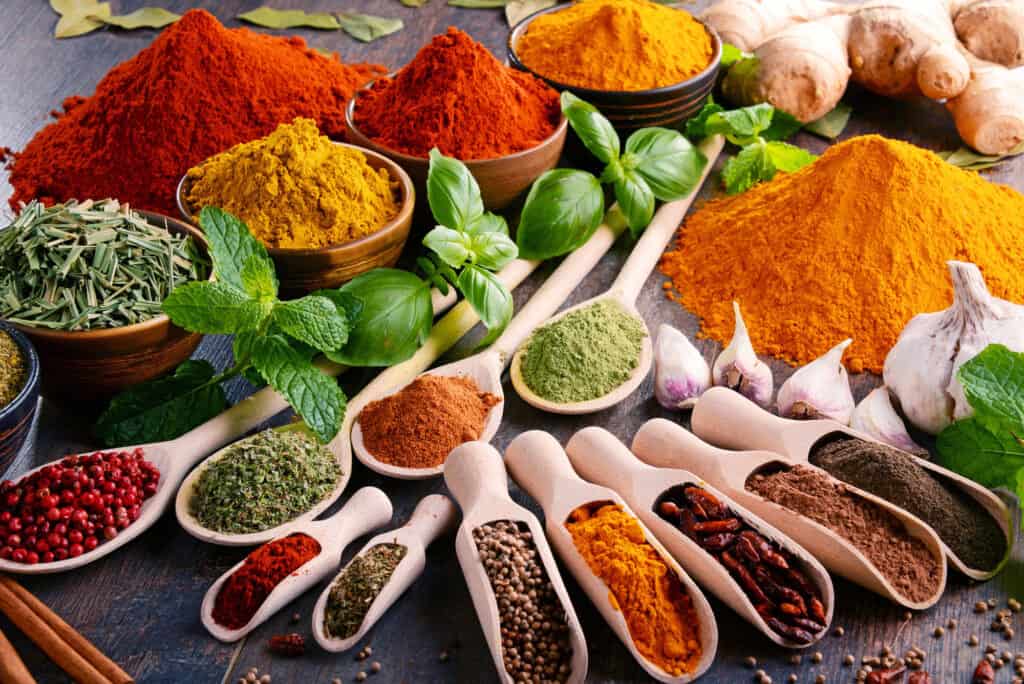
Saffron
is also produced in India, which is the most expensive spice in the world.
©iStock.com/monticelllo
India makes up 43% of the world’s annual spice production, with prominent varieties including black pepper, chili, cumin, turmeric, and cardamom.
Animals
India’s wildlife is truly remarkable, with its diverse landscapes providing a home to a wide array of plants and animals. From the impressive Asiatic lion in Gir Forest to the mysterious snow leopard in the Himalayan regions, there’s something for everyone to appreciate in the natural beauty of India.
11. Four of the world’s 36 biodiversity hotspots are in India.
Biodiversity hotspots are regions that contain a lot of species diversity. India proudly claims 4 out of the 34 recognized hotspots. These include the Himalayas, the Western Ghats, the Indo-Burma region, and Sundaland.
12. India holds 8% of all recorded species.
With over 45,000 plant species and 91,000 animal species, India, covering a mere 2.4% of the Earth’s land, holds a remarkable 8% of the planet’s biodiversity. This diversity is a result of the unique ecosystems crafted by the country’s diverse physical features.
13. India is home to 70% of the world’s wild tigers.
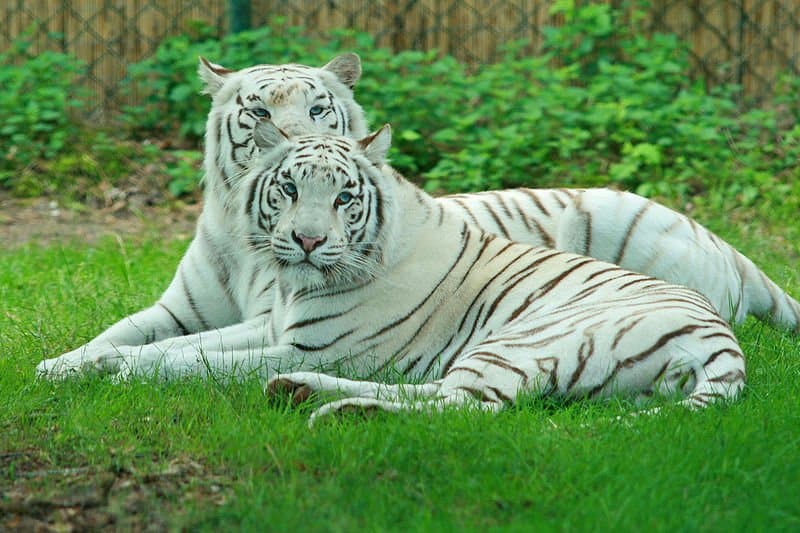
Notably,
white tigers
exclusively exist in India.
In the wild, tigers roam across 12 different countries, yet 70% of all wild tigers are found in India.
14. The country is the only habitat of Asiatic lions.
Once widespread across multiple states in India, this lion species now only remains in Gir National Park. Classified as endangered, a mere 674 individuals remain. Fortunately, dedicated conservation efforts have led to a resurgence in the population since 2015.
15. India has three crocodile species.
The slender-snouted gharial, nicknamed the fish-eating crocodile, lives in India’s freshwater rivers. In contrast, the mugger, another freshwater crocodile, has the broadest snout among all croc species. In the oceans of south India, you find the saltwater crocodile, the largest reptile on Earth.
16. The national bird of India is the peacock.
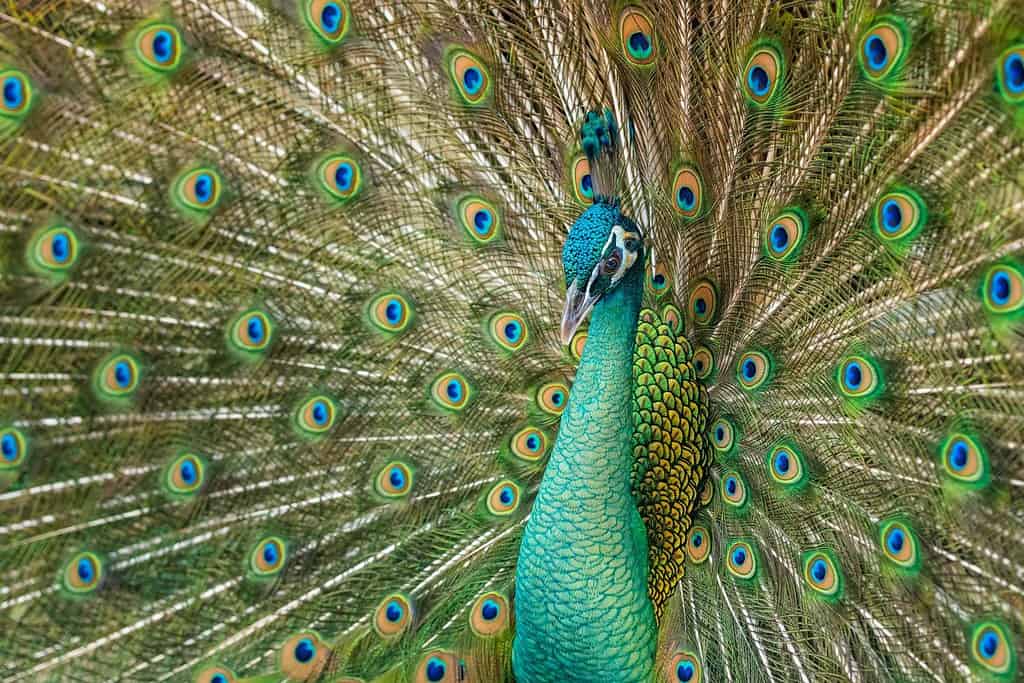
Known for its graceful dance during the mating season, the peacock is a symbol of beauty and elegance in Indian culture.
©Mazur Travel/Shutterstock.com
The peacock is renowned for its vibrant plumage, displaying a mesmerizing array of iridescent blues and greens.
Landmarks
With a history spanning several millennia, India has a number of interesting places. Explore the nation’s landmarks, from modern cities to ancient temples.
17. Lonar Lake was formed from a meteor crash 52,000 years ago.
This extraterrestrial lake is found within the Deccan Traps, a huge basaltic formation. It’s a near-perfect circle and the 3rd largest meteor crater on Earth. The lake has turned pink from an overgrowth of bacteria that thrives in salt water.
18. India is home to the oldest continuously inhabited city, Varanasi.
Inhabited since the 11th century BCE, Varanasi stands as the spiritual capital of India. Hindu pilgrims come from all corners of the world to bathe in the Ganges River.
19. Learn about Skeleton Lake.
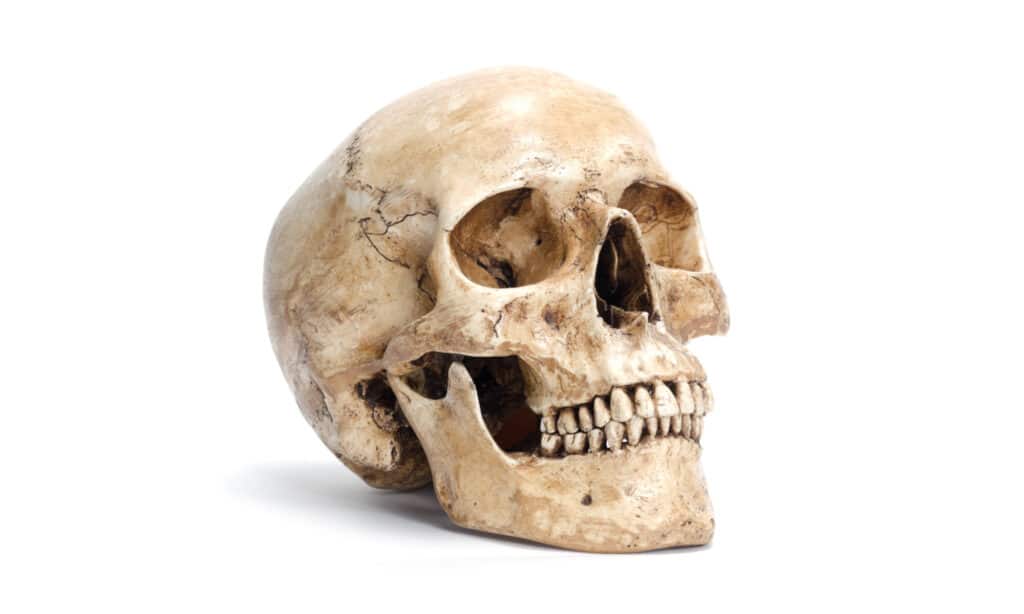
All the skeletons one thing in common: trauma to the skull.
©Chokniti Khongchum/Shutterstock.com
Skeleton Lake is shrouded in mystery. It’s named aptly, from the thousands of skeletons that inhabit the water. Remote in the Himalayan mountains, we don’t know how the several hundred skeletons ended up in the lake. Their remains did not get there simultaneously, dating from 1800 BCE to 800 CE, and ranging in origin from ancient peoples of the Mediterranean to East Asia.
20. Visit the Floating Post Office of Srinagar.
Floating on the waters of Dal Lake in Srinagar, the floating post office is a one-of-a-kind attraction. A working post office for the people of Srinagar, many tourists come to send special postcards and see this special post. It even uses a unique postal seal with the iconic Shikara boat.
21. The Golden Temple in Amritsar is the most visited place in the world.
Welcoming 100,000 daily visitors, this beautiful temple holds significance for Sikhs. Revered as a holy site, the temple provides a langar — a communal kitchen — serving countless meals daily. The unique practice of visitors sitting on the floor to eat fosters a sense of equality among all.
22. India has 6 mega-cities.
Mega-cities are defined by a population of 10 million, not even New York makes the cut. India’s mega-cities include Mumbai (12.5 million), Bangalore (13.6 million), Chennai (11.7 million), Hyderabad (10.8 million), Kolkata (15.3 million), and Delhi, standing out with an astonishing 35 million people.
23. The Taj Mahal is actually a tomb.
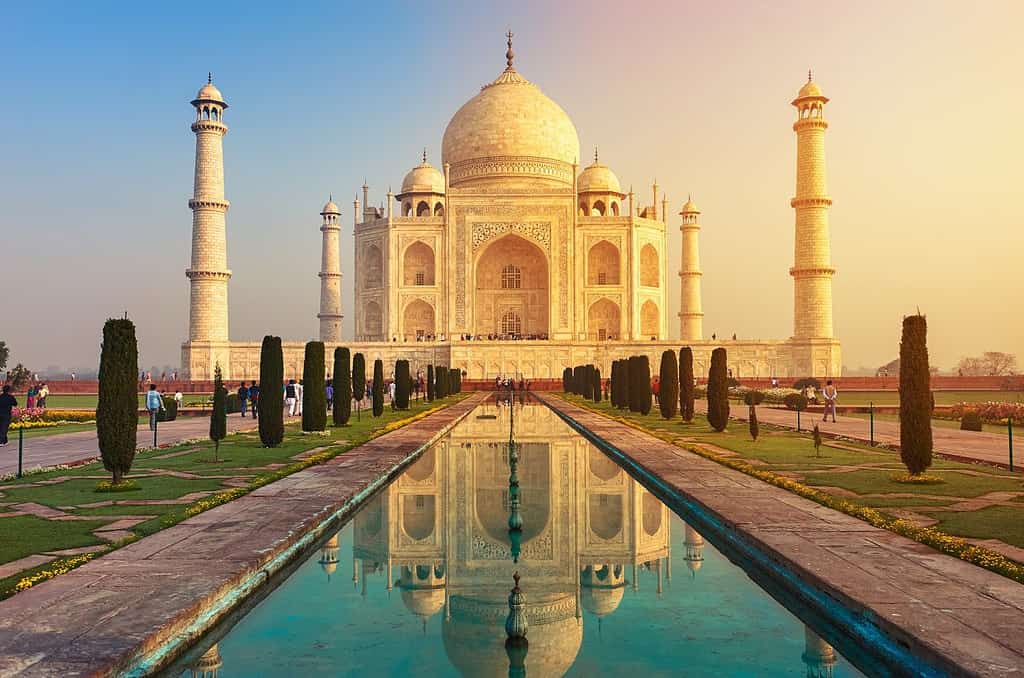
Emperor Shah Jahan built the Taj Mahal as a memorial for his favorite wife, Mumtaz Mahal, after she died in childbirth.
©YURY TARANIK/Shutterstock.com
Today the Taj Mahal is the resting place of the two lovers.
History
A nation characterized by ancient civilizations, diverse cultures, and profound philosophical contributions, India has an incredible timeline. From ancient times to modern influences, discover how India has evolved.
24. India is home to the oldest religion in the world.
With roots and customs dating back over 4,000 years, and complete scriptural texts dating back more than 3,000 years, Hinduism stands as the world’s oldest living religion.
25. The world’s numerical system comes from India.
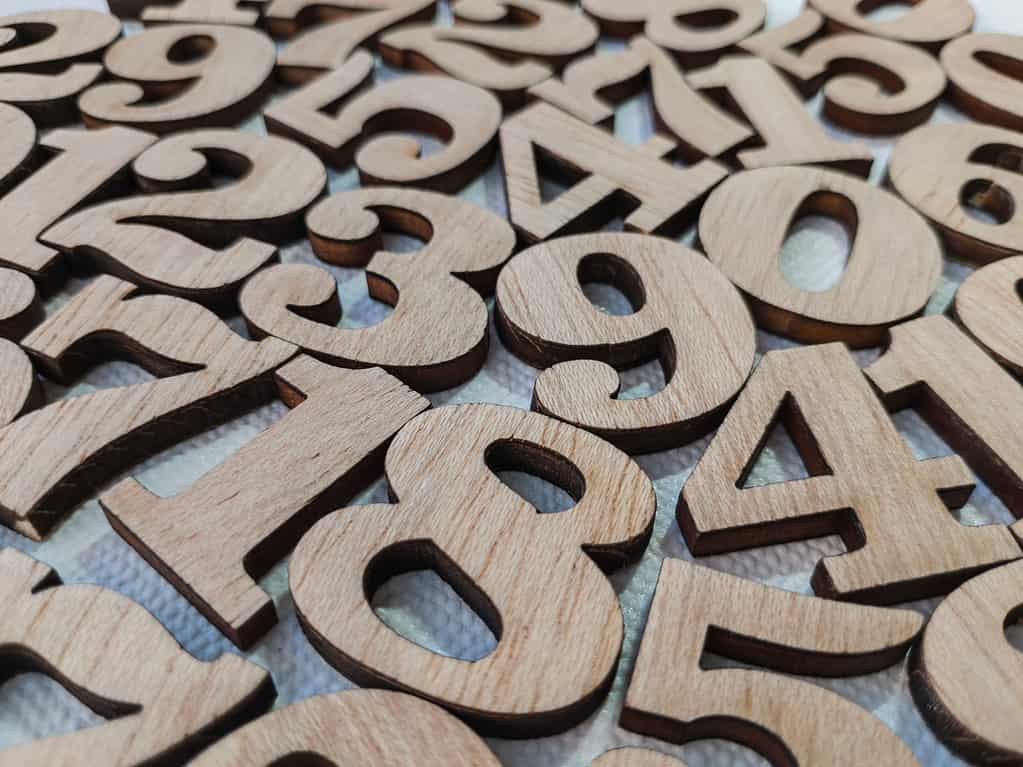
The term “Arabic numerals” emerged when these numerals were introduced to Europe by Arab merchants.
©Beniit/Shutterstock.com
The numerical system we commonly use, 1, 2, 3, 4, 5, 6, 7, 8, 9, originated as Hindu numerals.
26. Every night, India and Pakistan have a dance-off at the border.
Pakistan and India have a history of tension and conflict. The Attari-Wagah border ceremony is an intense display at their only border crossing. They each get their tallest soldiers — they must outshine the other side — and enter into a dance-off of stomps and high-kicks. This synchronized battle of rhythm comes to an abrupt end with a fierce staredown.
27. The an ancient university was established in India in 700 BCE.
Established in 700 BCE, Takshashila was an ancient university. It had over 10,500 students from all over the world and taught over 60 subjects spanning from medicine and commerce to music and dance. Founded over 2,700 years ago, this renowned institution endured for centuries.
28. India was the richest country in the world before British colonization in the 17th century.
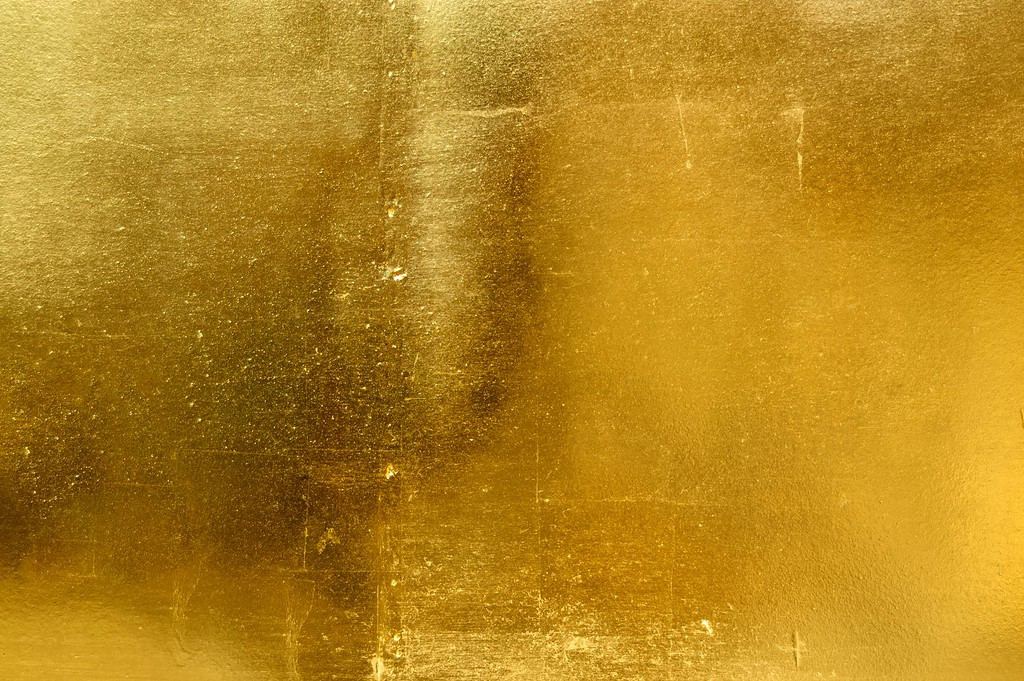
Before becoming “the brightest jewel in the British crown,” India had 14% of the world’s gold.
©Runrun2/Shutterstock.com
2,000 years ago, India had so much wealth it almost bankrupted Roman Egypt simply by trading. From 1 – 1600 CE, the country made up roughly 25-30% of the world GDP.
29. It’s is the most populated company in the world.
In April of 2023, India surpassed China as the most populated country in the world. India’s population is expected to keep growing for several more decades.
30. The name India comes from Indus.
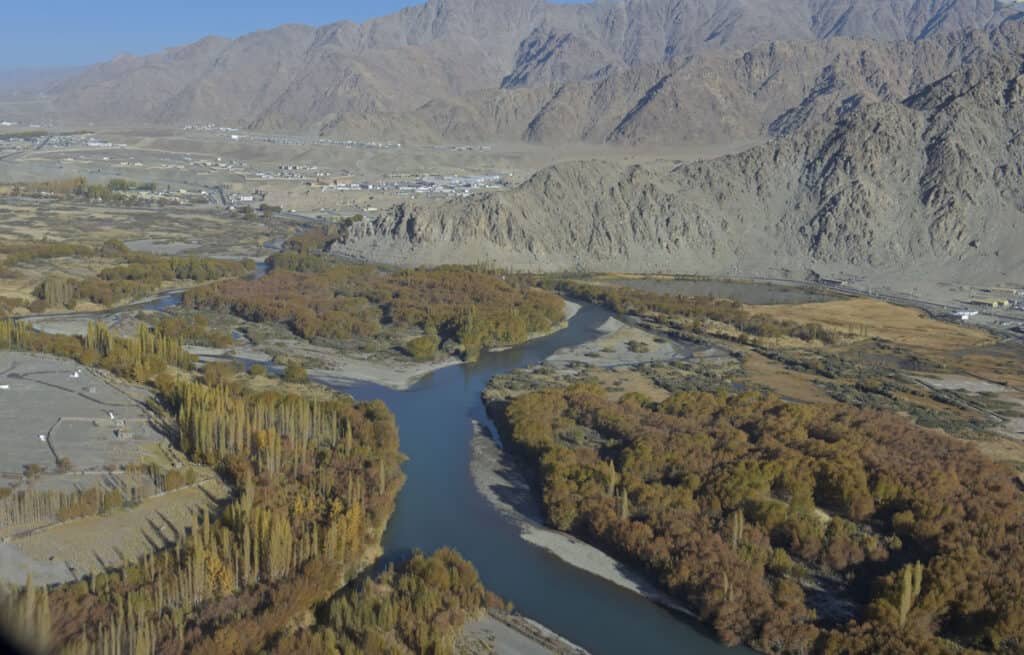
The Indus Valley, home to one of the earliest civilizations on Earth, holds a significant historical legacy.
©iStock.com/Naresh Sharma
India refers to itself as Hindustan or Bharat. Europeans began calling India ‘Indos’ meaning the land to the east of the river called Indus.
This hefty list is just a small glance into the vastness of India. You could spend a lifetime learning everything you could and not even scratch the surface of India’s ancient history, diverse cultures, breathtaking landscapes, and tapestry of traditions.
Thank you for reading! Have some feedback for us? Contact the AZ Animals editorial team.

